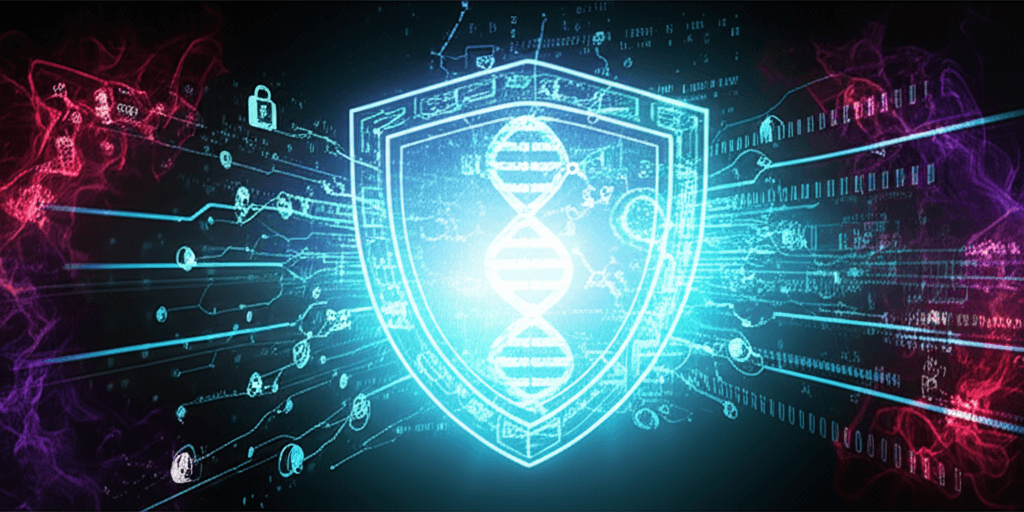Fighting Fire with AI: AbbVie Protects Life-Saving Pharma Data from Cyber Foes
AbbVie fights AI with AI, deploying intelligent defenses to protect groundbreaking drug research and sensitive data from next-gen cyber threats.
August 22, 2025

In the escalating arms race of corporate cybersecurity, artificial intelligence has emerged as the weapon of choice, a double-edged sword capable of both unprecedented defense and sophisticated attack. For the pharmaceutical industry, a sector built on sensitive data and high-value intellectual property, the stakes are exceptionally high. At the forefront of this new battleground is Rachel James, Principal AI ML Threat Intelligence Engineer at the global biopharmaceutical company AbbVie, who is harnessing the power of AI to defend against a new generation of cyber threats. The challenge is immense, as the very technology that promises to accelerate medical breakthroughs also provides adversaries with powerful new tools to exploit vulnerabilities and steal critical information.
The pharmaceutical sector is a prime target for cybercriminals, with life sciences companies accounting for nearly one-third of all cybercrime attacks.[1] The data these organizations handle—ranging from clinical trial results and patient information to proprietary drug formulas—is incredibly valuable. A successful breach can have devastating consequences, with the average cost in the pharma industry exceeding $5 million.[1] These are not simple smash-and-grab operations; they are sophisticated attacks often perpetrated by well-organized groups that function like multinational corporations, targeting companies with detailed research and persistent tactics like ransomware and "cryptoviral extortion," where data is stolen and threatened to be released on the dark web.[1] The sheer volume and complexity of these threats are rendering traditional, rule-based cybersecurity solutions increasingly inadequate, pushing companies like AbbVie to adopt more dynamic, intelligent defense mechanisms.[1]
At AbbVie, the defense strategy is increasingly reliant on artificial intelligence, particularly large language models (LLMs). James and her team employ AI to navigate the massive sea of security alerts and data they face daily.[2] "In addition to the built in AI augmentation that has been vendor-provided in our current tools, we also use LLM analysis on our detections, observations, correlations and associated rules," James explains.[2] This allows them to sift through mountains of information to identify patterns, detect duplicate alerts, and, crucially, perform gap analysis to find weaknesses in their defenses before an attacker does.[2] This process is centralized through a threat intelligence platform called OpenCTI, where AI plays a pivotal role in taking vast amounts of unstructured text data and organizing it into a standardized format known as STIX, creating a unified and actionable picture of the threat landscape.[2] The ultimate goal, according to James, is to use these language models to link this core intelligence across all security operations, from vulnerability management to managing third-party risk.[2]
This defensive posture is critical given AbbVie's extensive use of AI and machine learning in its research and development pipeline. The company's AbbVie R&D Convergence Hub (ARCH) is a massive data-driven initiative that connects information from over 200 internal and external sources to accelerate the discovery of new drugs.[3] While this AI-driven research promises to deliver therapies to patients faster, it also creates new, complex vulnerabilities.[4][5] The very AI models used for drug discovery can be targeted by adversarial attacks, such as data poisoning, where manipulated data is introduced to skew results, potentially leading to flawed drug candidates or compromised research integrity.[4] This creates a feedback loop where the AI used for innovation must be protected by an equally sophisticated AI-driven cybersecurity framework. The vast datasets and complex algorithms that are AbbVie's greatest assets in R&D are also its most vulnerable points, making the work of security professionals like James more critical than ever.[4]
The adoption of AI in cybersecurity is not without its profound challenges, chief among them being that adversaries have access to the same technology. AI can be used to create more convincing phishing attacks, automate the search for vulnerabilities, and develop novel forms of malware. This reality has created a fresh arms race where AI-powered defenses are pitted against AI-powered attacks.[2] James is acutely aware of this dynamic, actively contributing to the broader security community's understanding of these emerging threats. Her work with the OWASP Top 10 for LLM project, for which she is a core team member, is focused on identifying and mitigating vulnerabilities specific to large language models, such as prompt injection and data leakage.[6][7][8] This community involvement underscores a critical truth in the age of AI: defending a single corporation requires a collective, global effort to understand and stay ahead of how the technology can be misused.[6]
In conclusion, the work being done by Rachel James and AbbVie represents a crucial intersection in the evolution of both the pharmaceutical and AI industries. As biopharmaceutical companies become increasingly reliant on AI to push the boundaries of science and develop life-saving medicines, they must simultaneously pioneer the use of AI to protect their invaluable digital assets. The landscape is one of constant innovation and escalating threats, where the defender's shield and the attacker's sword are forged from the same intelligent material. Navigating this complex environment requires not only technical expertise but a forward-looking strategy that anticipates the next wave of AI-driven threats, ensuring that the technologies designed to improve human health are not compromised by those with malicious intent. The efforts within companies like AbbVie are a clear indication that the future of corporate security lies in fighting fire with fire, harnessing the power of AI to defend against the very risks it creates.